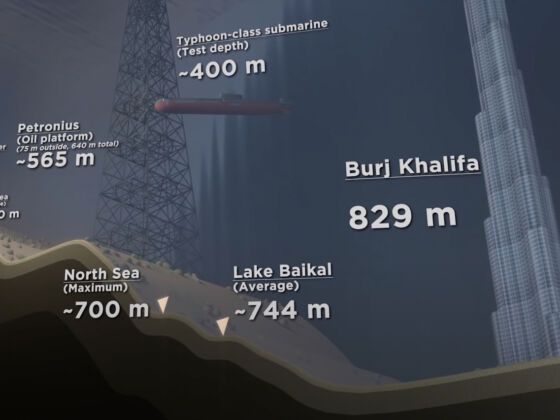The deepest bodies of water in the world can get pretty deep. So deep, in fact, that scientists estimate that 91 percent of ocean species have yet to be discovered, and more than 80 percent of the ocean is unexplored. That’s enough to make some people feel uneasy and avoid.
The exact depth (and how much we don’t know about what’s below the surface) depends on the body of water. A YouTube video from the 3D animators at MetaBallStudios, which is known for its size comparison videos, puts going down in the deep into new perspective. The video shows
